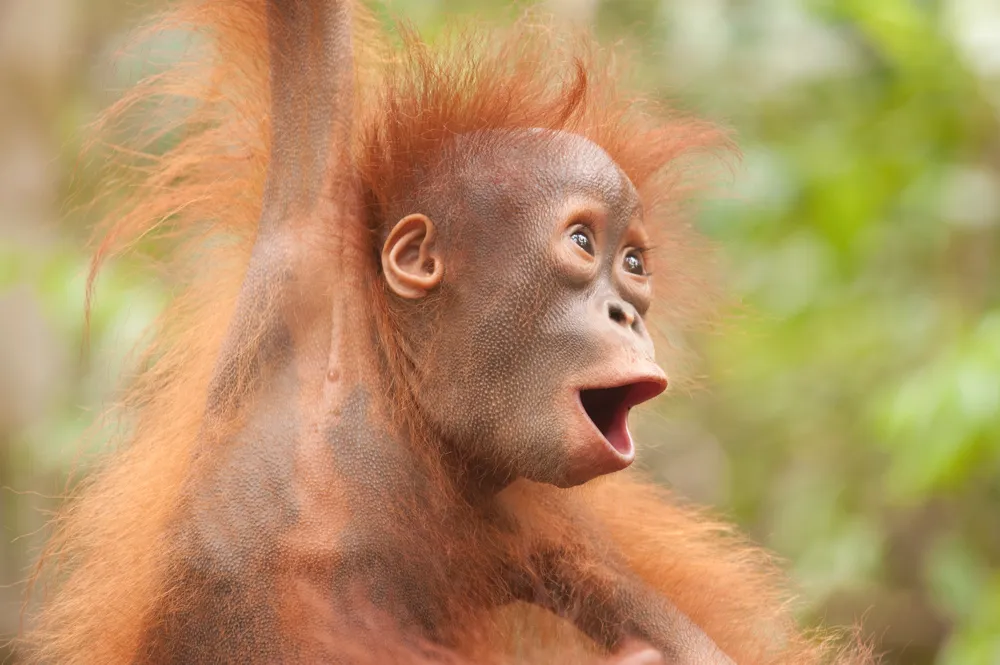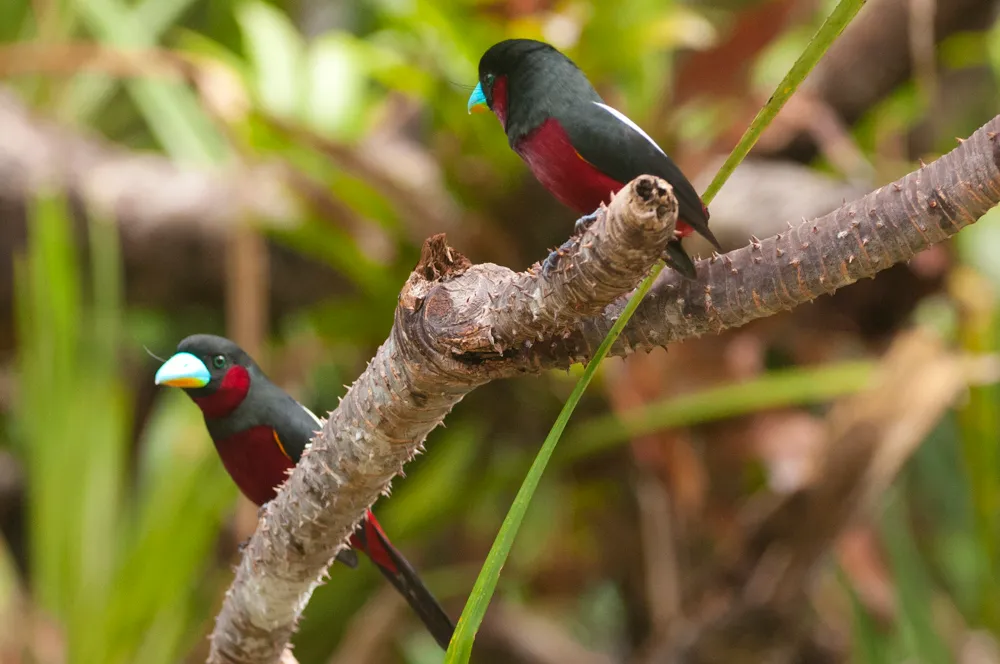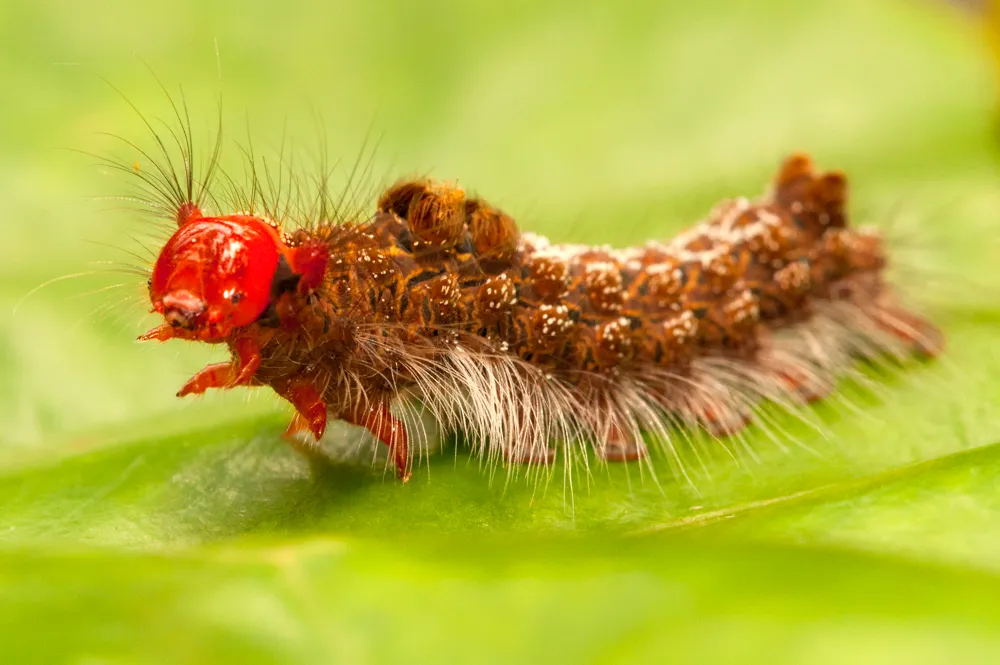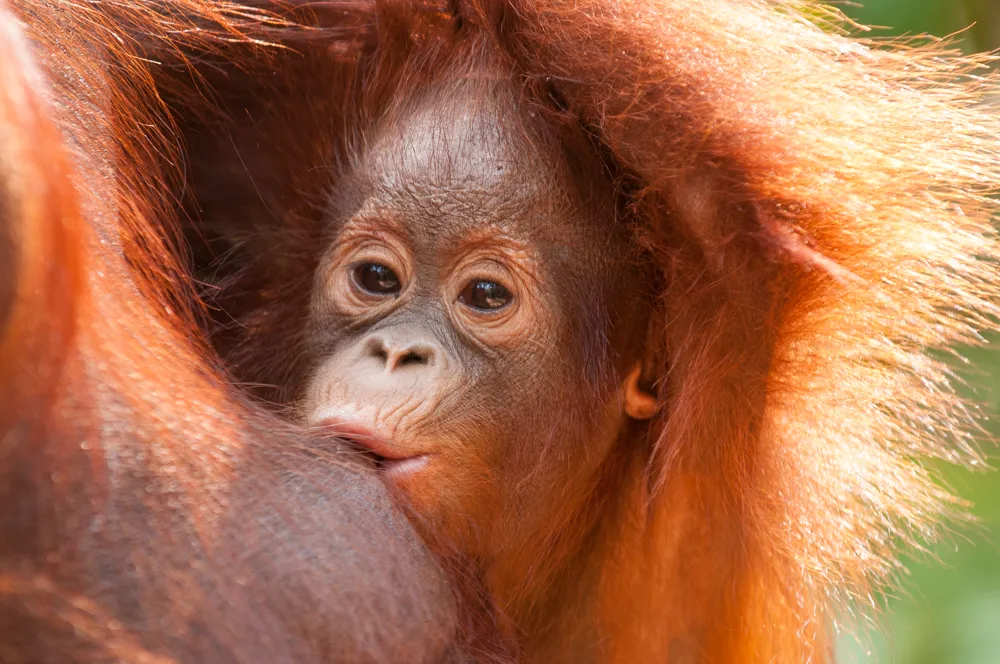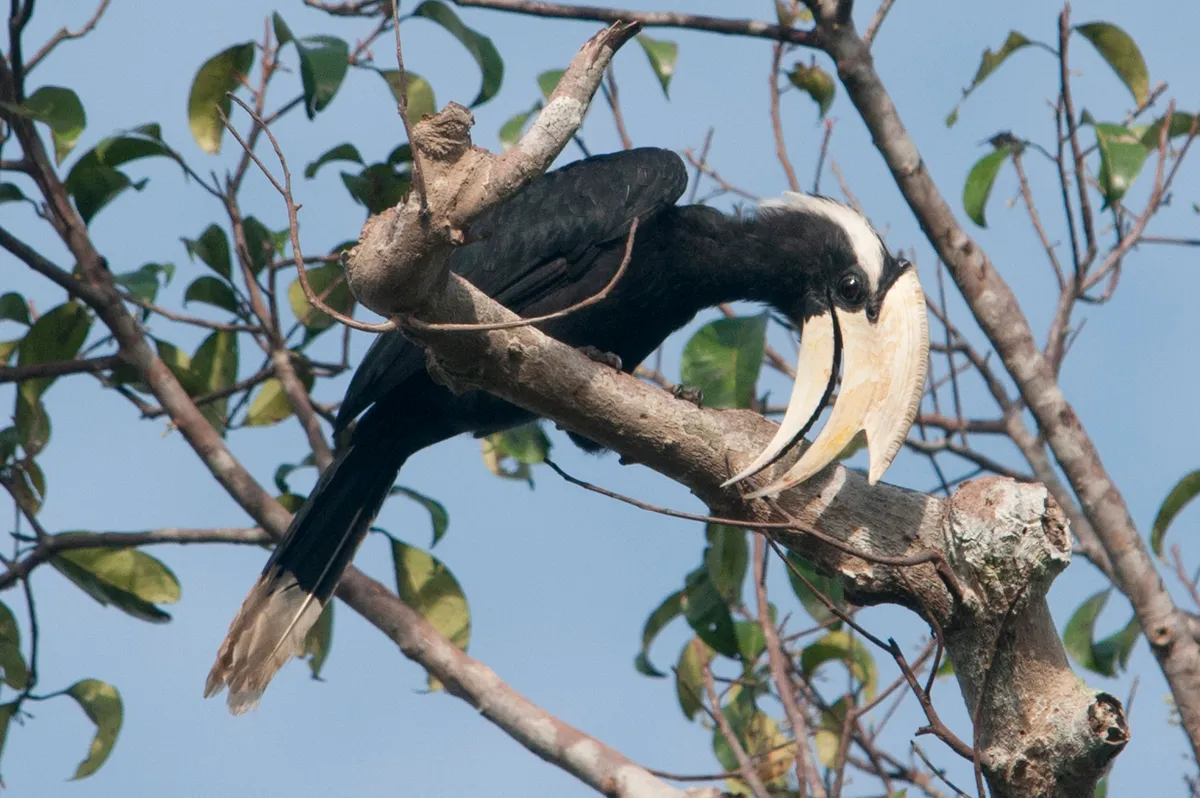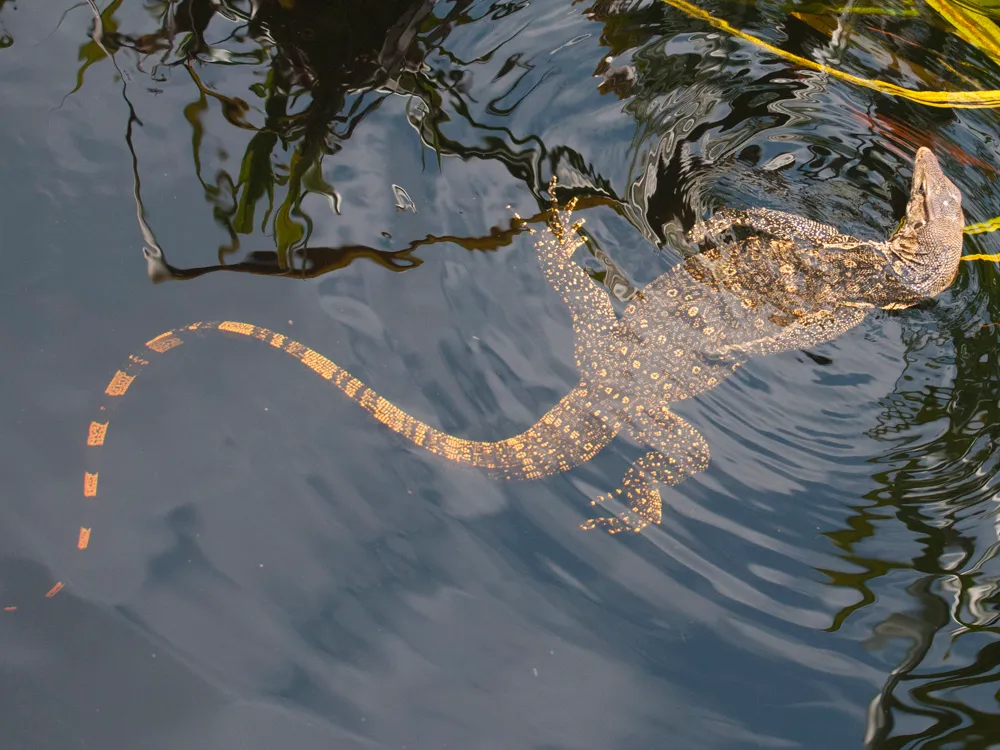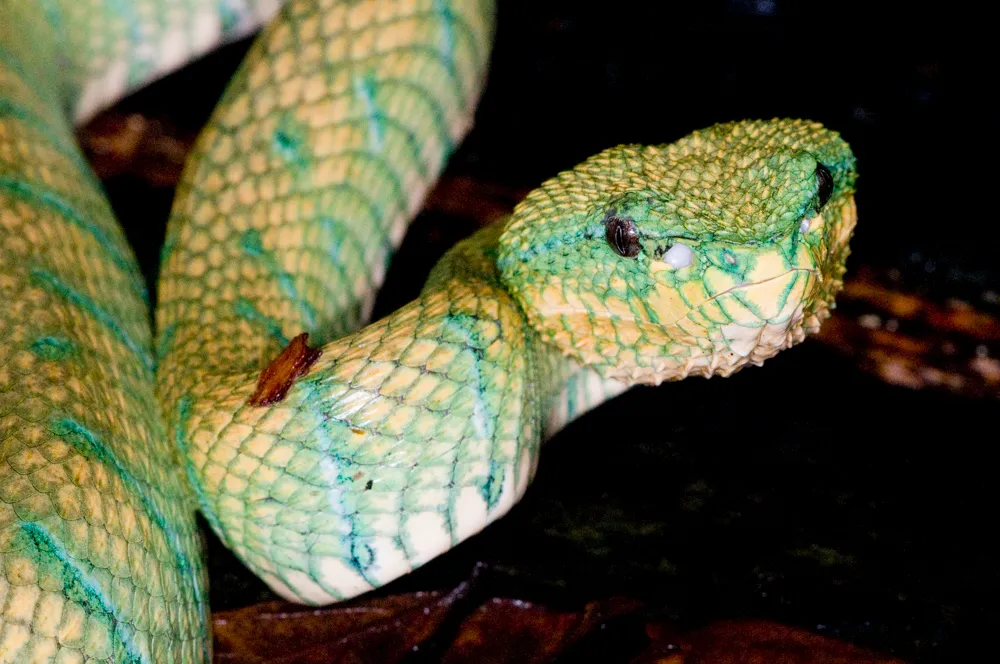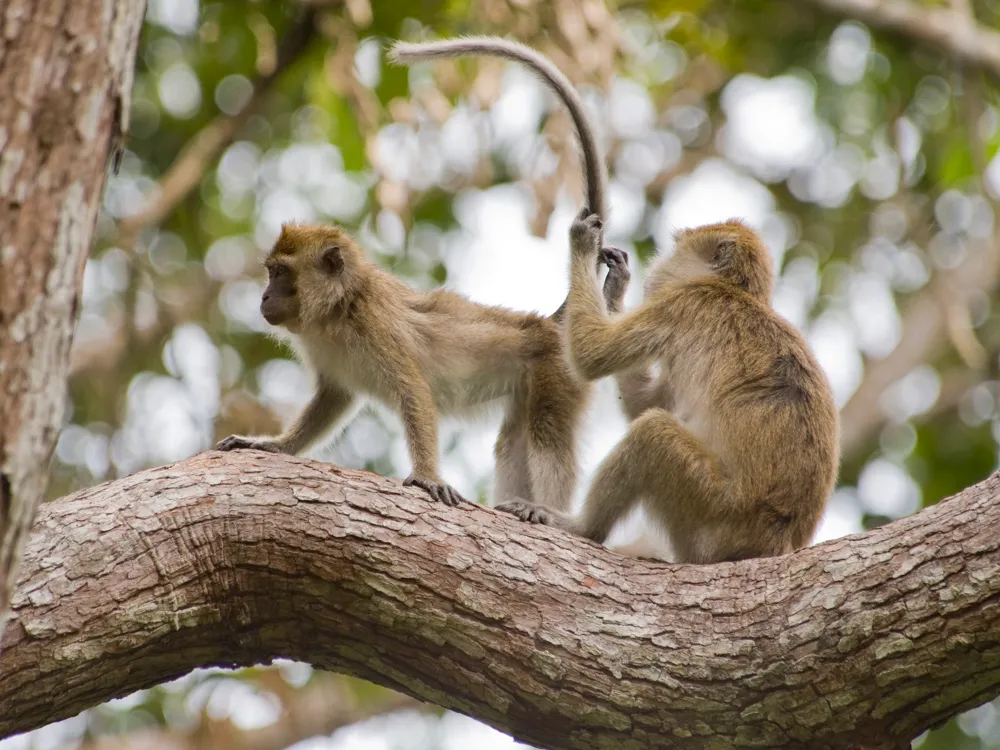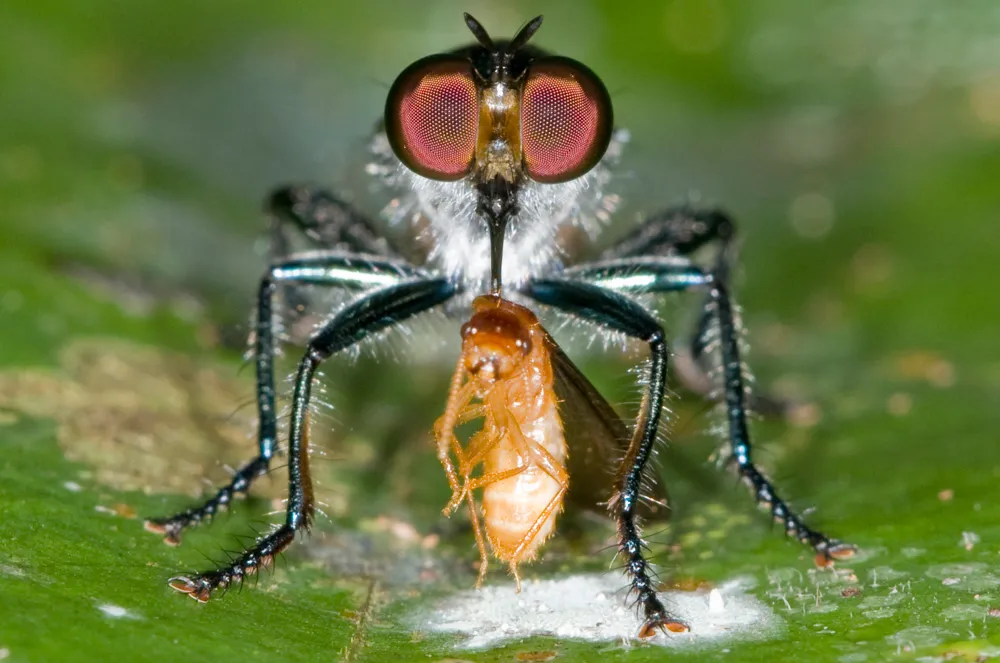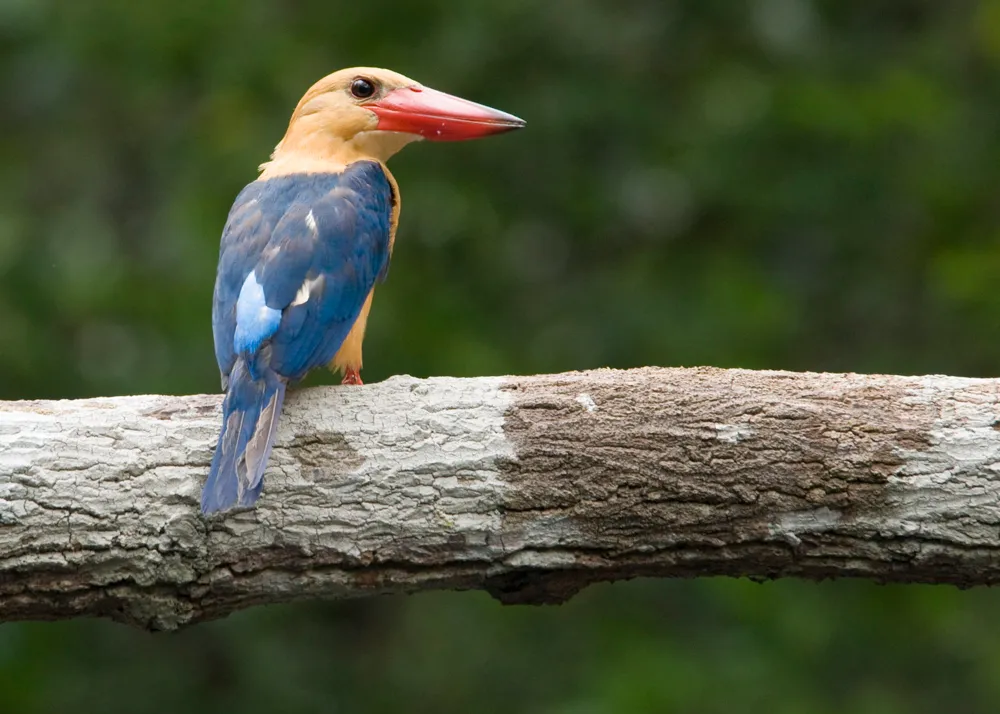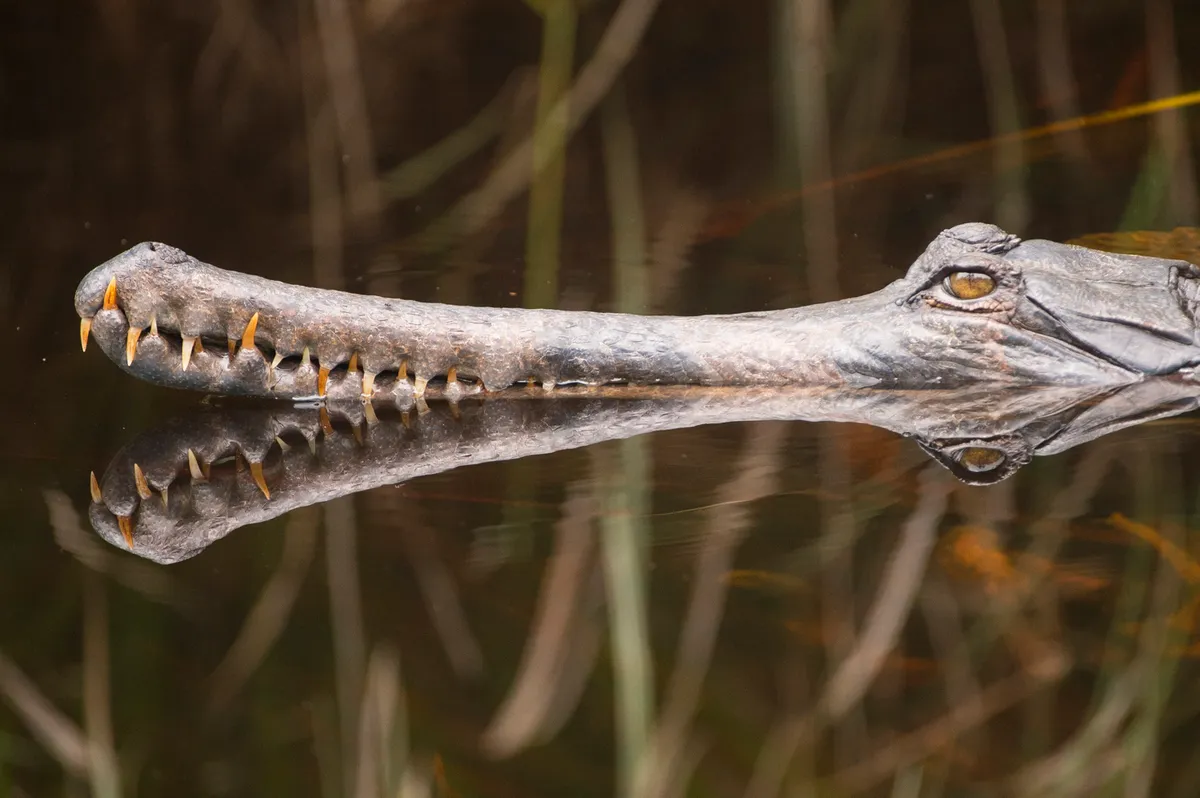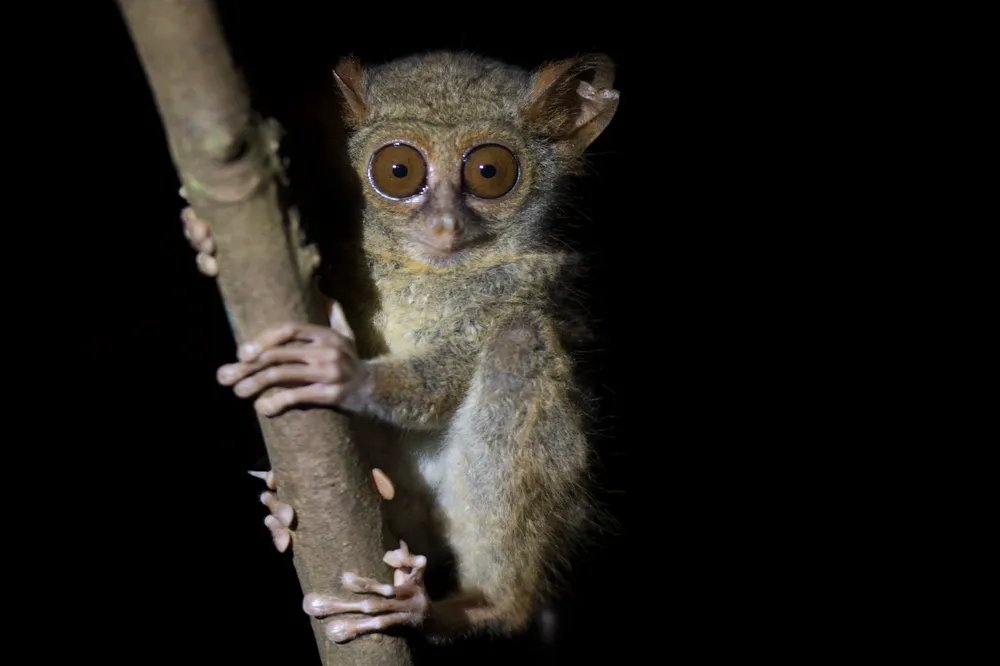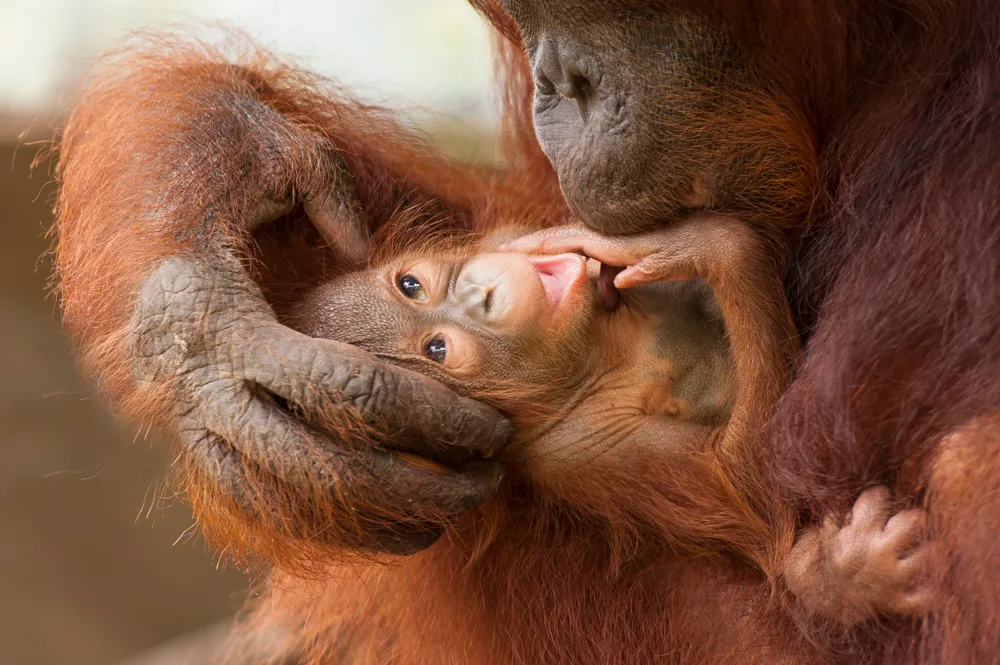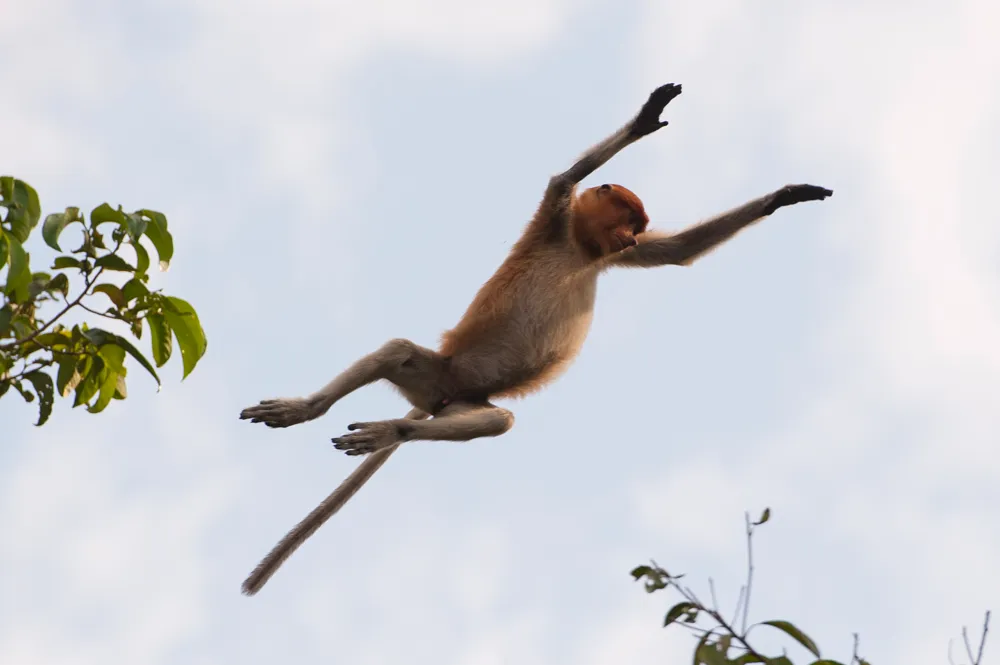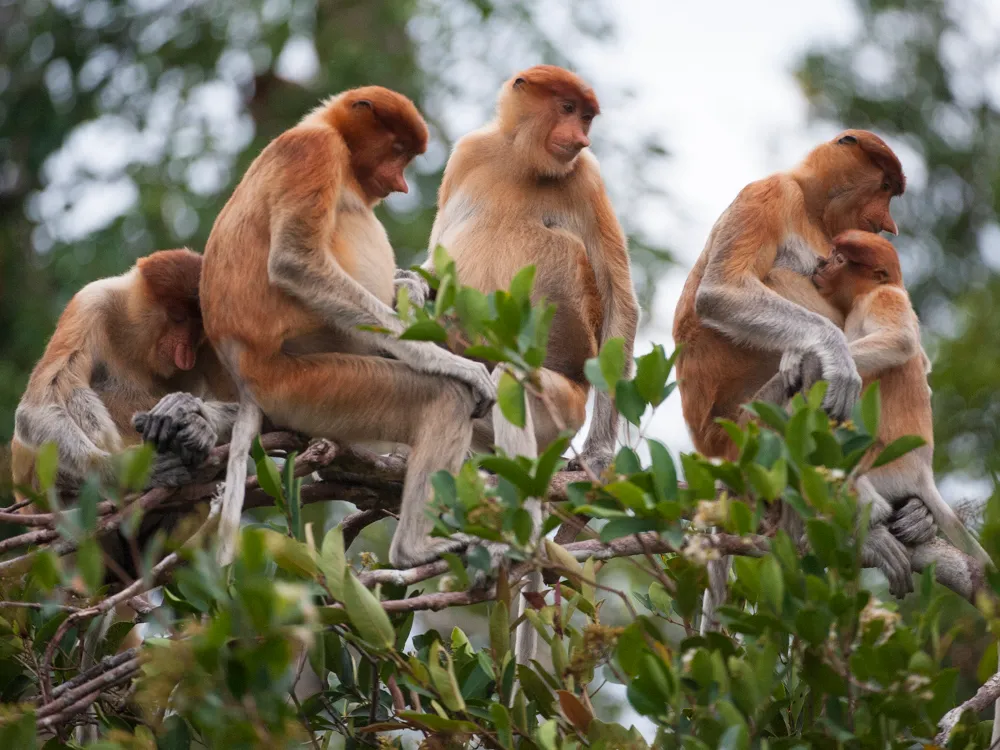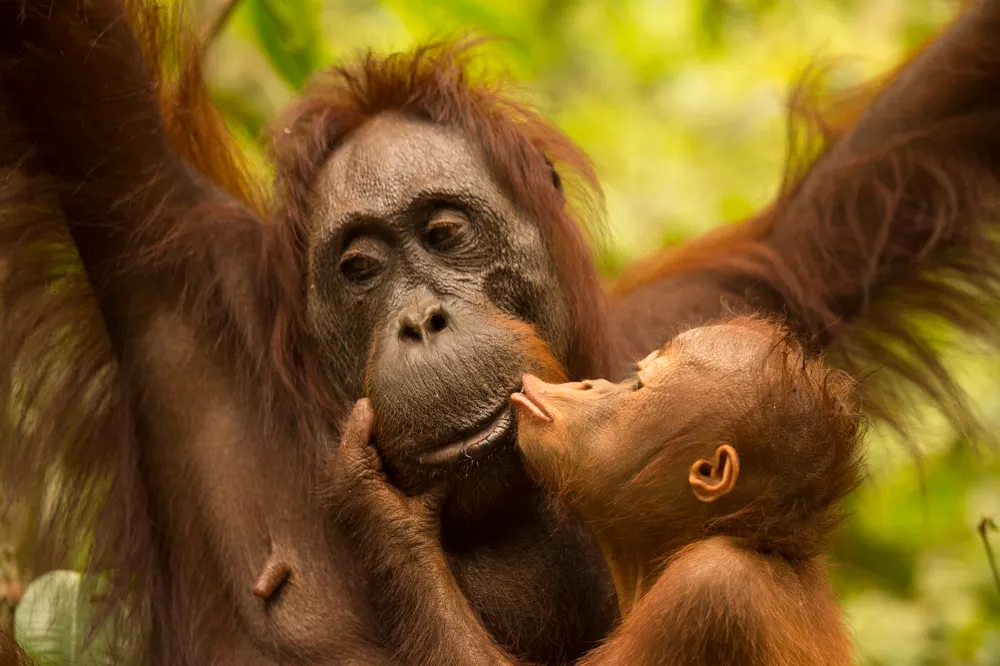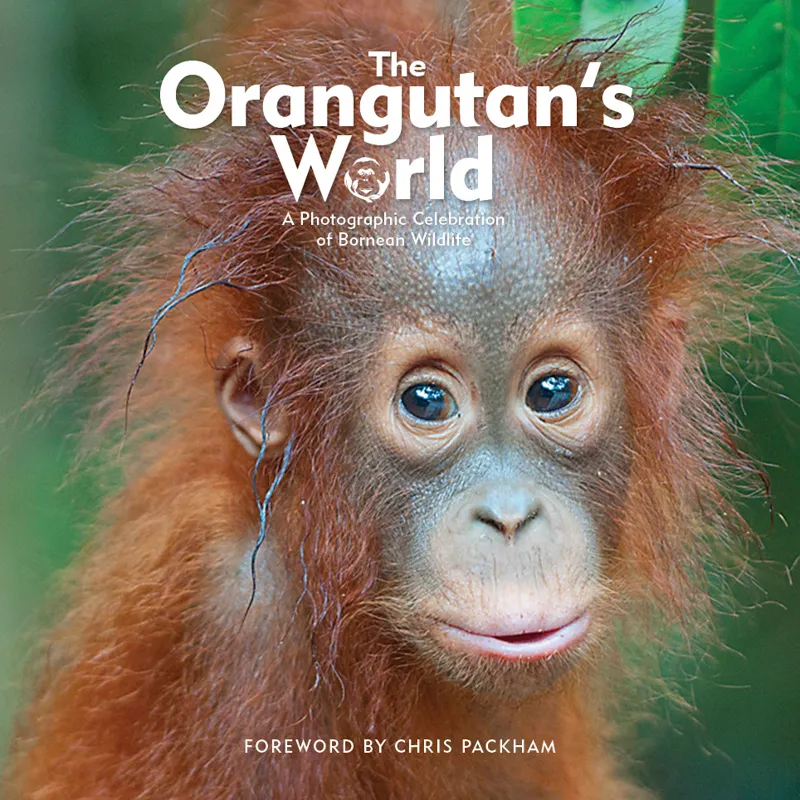Orangutans live on only two islands, Borneo and northern Sumatra. They are a relic species. At the end of the Pleistocene period some 12,000 years ago, their range was much wider, encompassing southern China, Indochina, Java and southern Sumatra.
In this photo gallery, wildlife photographer Ian Wood shares his incredible orangutan images taken for his book The Orangutan's World .
About Ian Wood
Ian Wood is a photographer and writer specialising in nature and conservation.
With a particular passion for primates and rainforests he has raised tens of thousands of pounds for orangutan conservation in partnership with The Orangutan Foundation over the last 12 years.
He regularly leads trips to both Borneo and other parts of the world. Visit, agoodplace.co.uk
A juvenile Borneo orangutan (Pongo pygmaeus) in Tanjung Puting National Park, Borneo which is one of the last strongholds of these great apes with a population of over 4000 thriving in well protected forest. © Ian Wood. With vibrant blue and yellow beaks and flashes of red on their bodies, Black and Red Broadbills (Cymbirhynchus macrorhynchos) are usually found close to rivers where they make a nest over hanging the water. More than 200 species of birds have been recorded in this National Park. © Ian Wood. A colourful caterpillar on a leaf in the Borneo jungle. These rain forests are home to a staggering array of life – some of which are still unclassified. © Ian Wood. A baby orangutan breastfeeding – for the first two years of an orangutan’s life it is completely dependent on its mother for food and transportation. The baby clings to its mother’s body while she moves through the trees and feeds on its mother’s breast milk. © Ian Wood. A male Asian Black Hornbill (Anthracoceros malayanus). The female seals herself in her nest plugging the hole with mud, leaving just a tiny slit through which the male feeds her and her chicks until they are ready to leave. © Ian Wood. A monitor lizard (Varanus salvator) in one of the black rivers of Tanjung Puting. Large areas of this National Park are classified as peat-swamp with the underlying peat being several metres deep in parts and containing huge quantities of CO2. © Ian Wood. The orangutan has the longest childhood dependence on its mother of any animal in the world being about seven years. During this period their offspring has much to learn including which fruits and other foods are suitable for their diet. © Ian Wood. With a marked triangular head the Wagler’s Pit Viper (Tropidolaemus wagleri) is generally found resting on low vegetation where they lie motionless for some time – either digesting their last meal or patiently waiting for its next prey which it detects using heat-sensing pits on either side of its head. © Ian Wood. Long-tailed Macaques (Macaca fascicularis) are capable of leaping over five metres from branch to branch using their long tails for balance. They live in matrilineal social groups with a female dominance hierarchy and male members leave when they reach puberty. © Ian Wood. Hover flies have the ability to both hover and fly backwards – an ability possessed by few other insects. They are important predators feeding primarily on aphids that attack fruit trees. © Ian Wood. The Stork-billed Kingfisher (Pelargopsis capensis) is highly territorial and is typically seen sitting and waiting on a branch for its prey, which includes fish and small mammals – mostly rodents – and even small birds. © Ian Wood. The False Gharial (Tomistoma schlegelii ) is a freshwater crocodile which can reach 6m in length. The males use the bulbous growths on the tips of their snouts to generate a buzzing sound which both attracts females and warns off rivals. © Ian Wood.
Striped Bronzeback tree snakes (Dendrelaphis caudolineatus) are long and thin, reaching up to 1.5 metres in length. They are diurnal and mainly feed on frogs, lizards, small rodents and baby chicks. © Ian Wood. Wide eyed Horsfield's tarsiers (Cephalopachus bancanus) are also sometimes referred to as Western Tarsiers. They are monogamous and during courting partners often chase each other while making distinctive soft sounds, but when mating begins they maintain complete silence. © Ian Wood. Anyone who has watched a mother and baby orangutan cannot fail to be touched by their loving maternal instincts. Orangutans only give birth to one baby every eight years or so and it is this long inter-birth interval which make them vulnerable to extinction. © Ian Wood. Proboscis monkeys (Nasalis larvatus) will often follow each other by moving through the trees in a ‘follow the leader’ routine. Occasionally they will even cross the rivers by hurling themselves from branches and splashing into the water before frantically swimming to the other side. © Ian Wood.
More amazing photo galleries:
Proboscis monkeys (Nasalis larvatus) are endemic to Borneo and are confined to low-lying coastal forest swamps which are highly threatened habitats. Their population in Tanjung Puting national park is one of the most important left for the future of this species. © Ian Wood. This photograph was one of the few positives from my trip to Borneo in September 2015 when this area was savaged by forest fires caused by a particularly savage El Nino year. © Ian Wood. The Orangutan’s World is a photographic celebration of Borneo wildlife to mark the 25th anniversary of the Orangutan Foundation who are working to ensure a long-term future for orangutans and other wildlife in these threatened forests. © Ian Wood. Test your general primate knowledge with our quiz:
